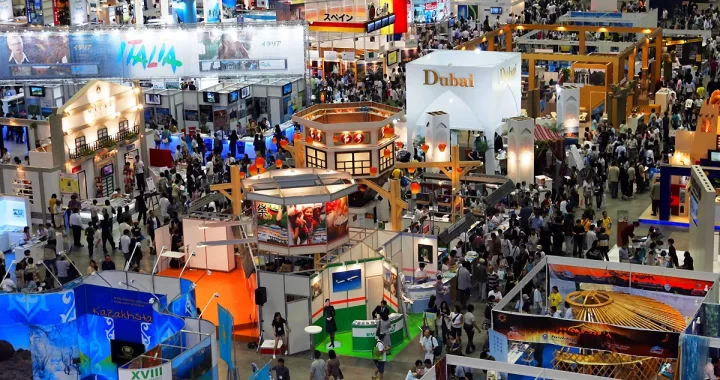Sustainable Trade Show Booth Design: Building a Greener Presence

Let’s be honest. The trade show floor can be a monument to excess. Think about it: vast, temporary structures built for a few days, only to be torn down and, too often, tossed in a dumpster. The sheer waste is enough to make any eco-conscious marketer wince.
But here’s the exciting part. A seismic shift is happening. Sustainable booth design isn’t just a “nice-to-have” anymore. It’s a powerful statement about your brand’s values. It’s a conversation starter. And honestly, it’s just smarter business. You can build a stunning, effective booth that doesn’t cost the earth—literally. Let’s dive into how.
Rethinking the Foundation: Materials Matter Most
This is where the real magic—and the biggest impact—happens. The stuff you build your booth out of is the heart of your sustainability strategy. Forget the cheap, laminated particleboard that warps and gets discarded after one use.
The Go-To Materials for a Green Booth
So, what should you use? Well, the options are more beautiful and versatile than ever.
- FSC-Certified Wood & Bamboo: Sourced from responsibly managed forests, these materials bring a warm, natural aesthetic that’s hard to beat. Bamboo is a superstar—it grows incredibly fast, making it highly renewable.
- Recycled Aluminum: This is a workhorse. It’s lightweight, incredibly durable, and infinitely recyclable. Systems built from aluminum last for years, not just one event.
- Bio-Plastics & Recycled Fabrics: For graphics and soft elements, look for fabrics made from recycled PET bottles (think banner material) or new bio-plastics derived from corn or algae. They look just as vibrant as their virgin counterparts.
- Reclaimed & Upcycled Elements: Get creative! Old wooden crates, repurposed industrial parts, or even vintage furniture can add incredible character and tell a unique brand story.
The Power of “Re”: Reusable, Rented, and Modular
The most sustainable booth is the one you never have to build from scratch again. This mindset is a game-changer. It’s about designing for longevity, not landfill.
Investing in a Modular System
Modular booth design is, without a doubt, the cornerstone of sustainable exhibiting. Imagine a set of interlocking panels, frames, and components that you can reconfigure for a 10×10 space one month and a 20×30 island the next. It’s like LEGO for trade shows. This approach drastically reduces waste and, over time, saves a ton of money.
Don’t Own, Rent
For smaller companies or those testing new markets, renting a booth is a fantastic option. Rental companies maintain high-quality, reusable inventory. You get a professional look without the permanent footprint—both environmentally and in your storage facility.
Lighting & Tech: The Energy Equation
Walk any trade show floor and you can feel the heat from the halogens. The energy consumption is massive. But a few simple swaps can change everything.
LED lighting is the obvious hero here. It uses up to 80% less energy than traditional lighting and emits very little heat, making your booth more comfortable. And the quality of light is brilliant now—no more cold, unflattering tones.
When it comes to screens and tech, be intentional. Do you need all five screens running a high-definition video loop all day? Probably not. Use motion sensors to power down displays when no one is nearby. Opt for energy-efficient monitors. Every watt saved adds up.
Beyond the Build: The Full Experience
Sustainability shouldn’t stop at the booth’s structure. It should flow into every single touchpoint of your attendee experience.
Let’s talk giveaways. We’ve all collected that cheap, plastic tchotchke that ends up in a drawer forever. Instead, offer digital swag—a downloadable whitepaper, a subscription, or an entry to win a premium experience. If you must have a physical item, make it high-quality, useful, and made from sustainable materials. A bamboo phone stand, a notebook from recycled paper, a tote bag from organic cotton… things people will actually keep and use.
And what about collateral? Please, move away from the towering stacks of glossy brochures. Most get discarded before the attendee even leaves the convention center. Use QR codes that link to a dedicated landing page. Have tablets available for people to browse your digital catalog. It’s more dynamic, trackable, and waste-free.
A Simple Comparison: Old Way vs. New Way
| Element | Traditional Approach | Sustainable Strategy |
|---|---|---|
| Structure | Custom-built from virgin particleboard | Modular system from FSC wood or aluminum |
| Graphics | PVC vinyl banners, landfill-bound | Fabric from recycled PET, reusable for years |
| Lighting | Energy-intensive halogen spots | Low-heat, efficient LED fixtures |
| Giveaways | Plastic novelties, quickly discarded | Digital downloads or useful, quality items |
| Collateral | Stacks of paper brochures | QR codes & digital content hubs |
The Real Payoff: It’s Not Just “Green”
Adopting these strategies does more than just help the planet. It strengthens your brand. A sustainable booth is a powerful storytelling tool. It shows you’re innovative, responsible, and in tune with modern consumer values. That resonates deeply with potential clients and partners.
And let’s talk logistics. A reusable, modular system is often lighter and easier to ship. It sets up and tears down faster, saving on labor costs. The long-term ROI is undeniable. You’re building an asset, not creating trash.
Sure, the initial investment might give you pause. But think of it as shifting your budget from a disposable expense to a capital investment. You’re buying a system, not a single event.
Making It Happen: Your First Steps
Feeling overwhelmed? Don’t be. You don’t have to overhaul everything overnight. Start with an audit of your current exhibit. What gets thrown away? What can be replaced? Maybe this year, you switch to fabric graphics and LED lights. Next year, you invest in a modular structure.
Have a conversation with your exhibit house or designer. Ask them pointed questions about material sourcing, end-of-life plans, and modular options. Their answers will tell you everything you need to know about their commitment to sustainability.
In the end, it’s about a new perspective. It’s about seeing your temporary marketing space not as a short-term spectacle, but as part of a longer, more responsible conversation. Your booth is a physical manifestation of your brand’s promise. So, what do you want that to be?










